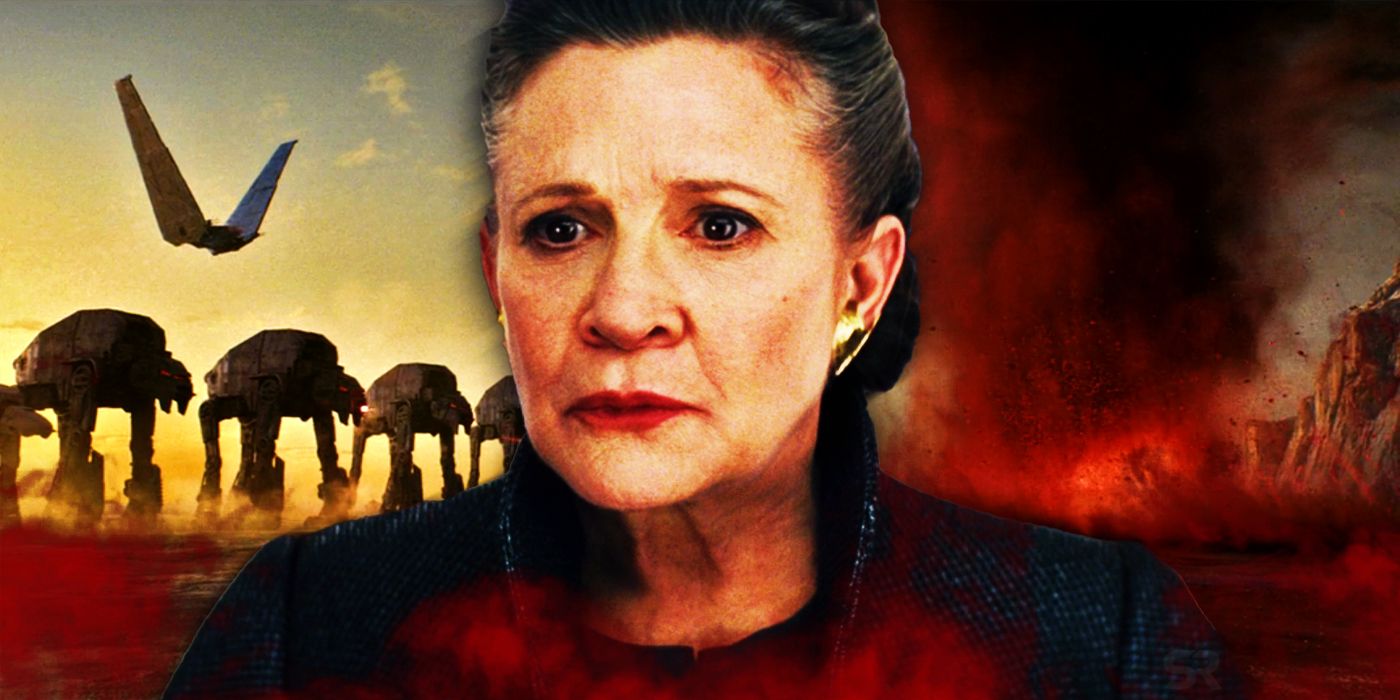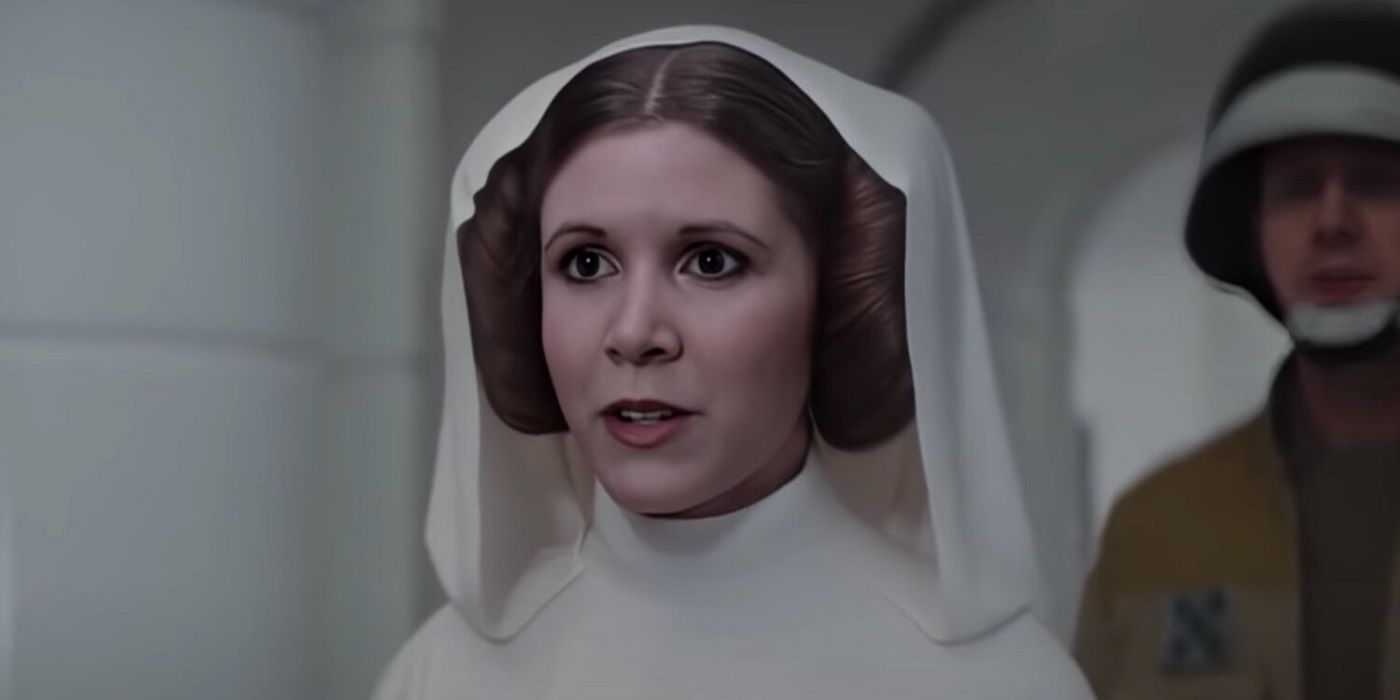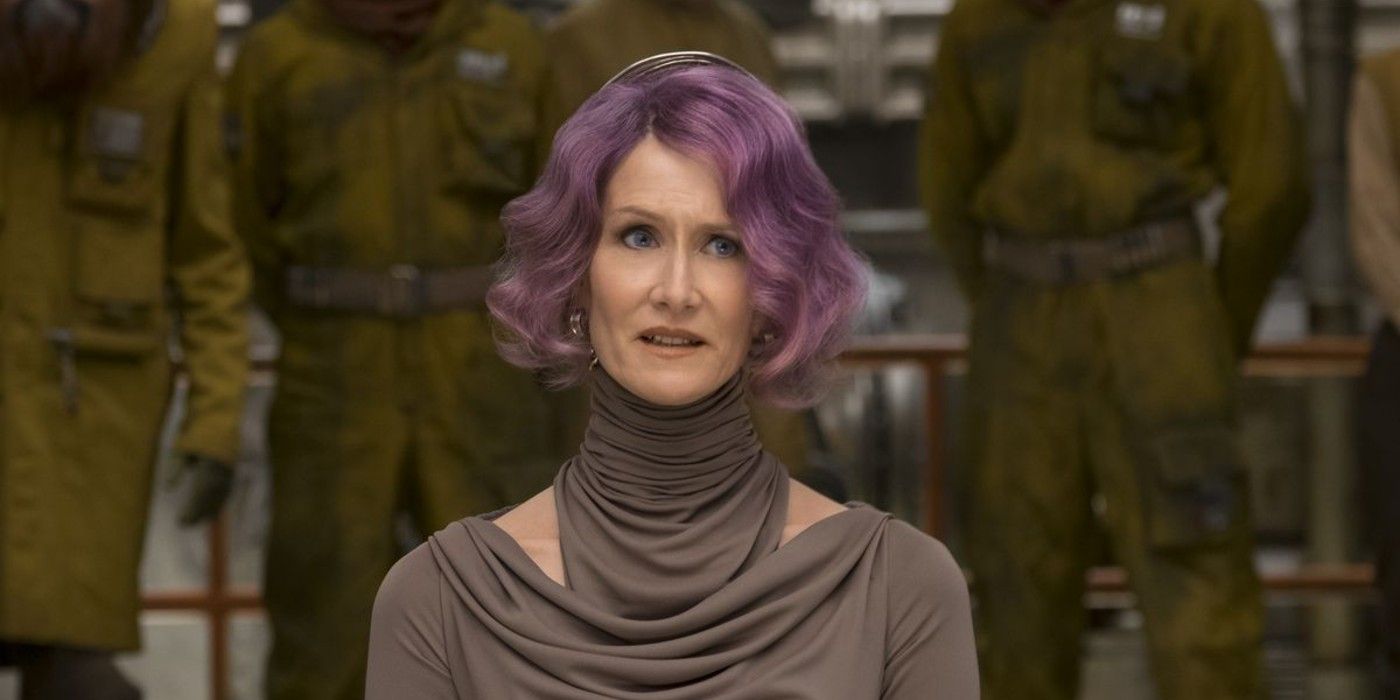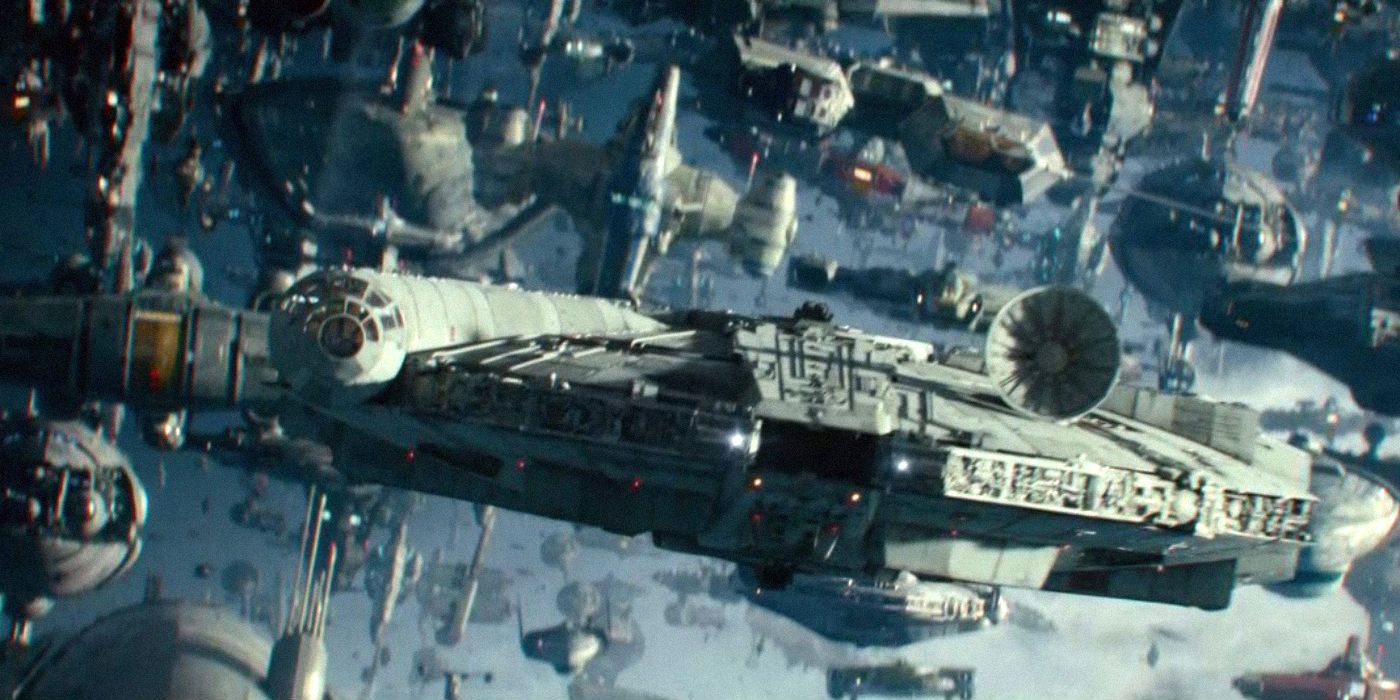A small detail in Star Wars: The Last Jedi that undermined a core Star Wars theme proves to be a headache for Disney to this day. The Last Jedi is known for being one of the most divisive Star Wars movies in the entire franchise. J.J. Abrams played it safe with The Force Awakens by largely borrowing the plot of A New Hope. But Rian Johnson went out of his way to subvert expectations and craft a Star Wars movie unlike any in the franchise. In doing so, Johnson inevitably tossed out some old ideals that were beloved to some fans—most notably Luke’s belief in the Jedi Order.
Though it was initially controversial during its release, The Last Jedi aged better than its sequel, The Rise of Skywalker. However, while some of Johnson’s radical changes to the franchise have been accepted and expanded upon, one failed to capture the true meaning of Star Wars. Toward the end of The Last Jedi, the paltry remains of the Resistance escape to the mineral planet Crait. There, Leia and the Resistance use antiquated equipment from the old Rebel Alliance in order to send a last plea for help to their allies. Leia makes it clear that if there was ever a time to help, it was then.
The Last Jedi's SOS Message Undercut Star Wars' Theme Of Hope
Throughout The Last Jedi, the mantra of the film seemed to be that Star Wars' Resistance was “the spark of hope” that would burn down the First Order. But when the moment arrived, nobody responded to Leia’s call for help—and Star Wars has tried explaining this ever since. The heroes make it clear throughout the film they need to survive in order to inspire their allies, scattered across the galaxy. But then they are betrayed by the very people they’re fighting for, leading to a hopeless situation—which betrays the point of Star Wars.
Though the words “A New Hope” were not in the title of the original Star Wars movie upon its release, the message of the film—and the franchise as a whole—hasn’t changed. The original trilogy was about the Rebellion hanging onto the thin hope that the Empire could be defeated. Meanwhile, the prequel trilogy held onto the hope that the Chosen One would bring balance to the Force as the Republic decayed around them. Even recent shows like Andor help further A New Hope’s message. Yet The Last Jedi seems to suggest that every last ally of the Resistance suddenly lost hope.
Star Wars Struggled To Figure Out How To Fix Last Jedi's SOS Message
Rian Johnson’s decision to send the heroes no help ended up being one of the biggest plot holes in the sequels. In every other Star Wars movie, there were always allies or those that sympathized with the heroes and their cause. But for some reason, the galaxy decided to take the day off during the events of The Last Jedi. The only explanation in the film is that Holdo mentions that the Resistance’s allies are oppressed throughout the galaxy—which is why they fight to inspire them. It’s possible that even though the allies of the Resistance heard the plea, they were unable to respond.
While some aspects of The Last Jedi improved Lucas’ ideas, the idea that the galaxy lost all its hope betrayed Star Wars itself. Resistance Reborn, a novel by Rebecca Roanhorse, further expands on Holdo’s explanation in The Last Jedi. In it, she suggests that there had been a movement throughout the galaxy by the First Order to silence allies of the Resistance. Loved ones were kidnapped and held as blackmail against sympathizers—who were under constant observation. But while this explanation helps The Last Jedi, it doesn’t make much sense given what happens in The Rise of Skywalker.
The Rise Of Skywalker's Explanation Was Too Convenient, And Just Didn't Work
In several ways, Disney and Abrams spent a large portion of The Rise of Skywalker vetoing and retconning the ideas Rian Johnson set up in The Last Jedi. But even though The Rise of Skywalker tried to fix the sequels, it ended up doing more harm than good. Instead of suggesting that the Resistance’s allies were unable able to respond to Leia’s call for help, the movie clumsily reveals that their transmission had been blocked by the First Order. Of course, this doesn’t fully make sense considering that The Last Jedi previously mentioned that the transmission was received by several allies—despite no one responding.
To make matters worse, the same situation is repeated in The Rise of Skywalker. When the Resistance plans to journey to Exegol to confront Palpatine, they send Lando and Chewbacca to rally their allies to join the fight. Everyone answers the call this time around, drawing perhaps even closer attention to the initial call and its complicated position in the series. If Rian Johnson had directed TROS, it would have been interesting to see how he would have addressed the challenges he set up in The Last Jedi. Nevertheless, abandoning Star Wars’ theme of hope in The Last Jedi was overall a move that contracted a core aspect of the franchise.




